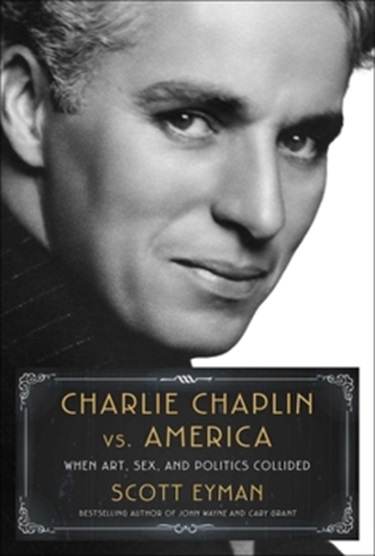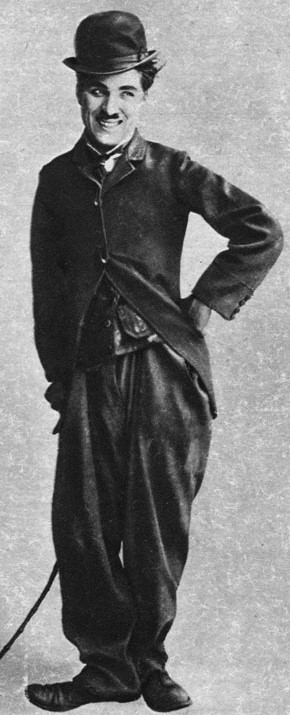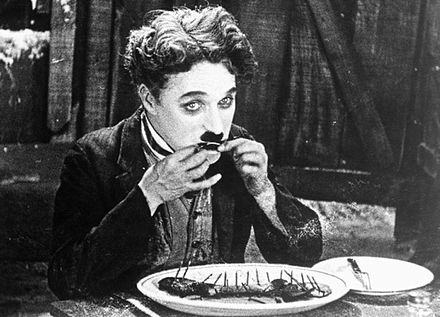
[As a Library Thing Early Reviewer I’m in the running to be sent books in exchange for a review. It’s a bit of a lottery – you choose books from scores offered each month, and maybe one shows up, or not. This one did.]
Scott Eyman, a prolific biographer of figures from Hollywood’s so-called golden age, always wanted to write about Charlie Chaplin, but he admits in the acknowledgments to this book that he had a bit of a problem: “… bookshelves groan under the weight of books about Charlie Chaplin, and I didn’t have an approach. What could be said about him that hadn’t already been said?”
 Considering the age of alternative facts we’re living in, Eyman found a timely angle: “Focus on the process by which Chaplin segued from the status of beloved icon to despised ingrate; focus on him being converted from one of America’s prized immigrants to a man without a country.”
Considering the age of alternative facts we’re living in, Eyman found a timely angle: “Focus on the process by which Chaplin segued from the status of beloved icon to despised ingrate; focus on him being converted from one of America’s prized immigrants to a man without a country.”
And while Eyman does indeed focus on the scarifying process of Chaplin’s downfall, hastened by a press campaign as unloosened from the facts as Fox News on a daily basis, he does backtrack to give an underpinning of biography in his Charlie Chaplin vs. America: When Art Sex and Politics Collided (Simon & Schuster, $29.99).
That’s good for those of us who have not previously scanned that groaning bookshelf and have less familiarity with Chaplin’s oeuvre than we’d like to admit. So we’re taken back to Chaplin’s early days in England, growing up with alcoholic and largely absent father, a mentally unstable mother, and a life of grinding poverty and days in Dickensian workhouses.
One way out for the young Charlie and his older brother, Sydney, was in performing on the music hall stages of the day. Once he crossed the Atlantic he took those performing skills to vaudeville, and by 1914 he was a contract player with Mack Sennett’s Keystone Studio. A suggestion by Sennett that Chaplin head to wardrobe for some kind of getup to enliven a scene being worked on led to the creation of Chaplin’s the Tramp character.
That gradually, but fully, launched his rags to riches story, as he graduated from bits in two-reelers to owning his own studio and turning out classics like “The Kid,” “The Gold Rush,” “The Circus,” “City Lights” and “Modern Times.”
It was when Chaplin left the U.S. for Europe in September 1952 to promote his latest film, “Limelight,” that his re-entry permit was revoked. It was the beginning of his exile from the U.S.
What led to such a point? Eyman spells it out in well-researched detail. Chaplin had two strikes against him, as least as far as his antagonists in the press were concerned—his refusal to become a U.S. citizen, and his penchant for women far younger than he.
 Neither a crime, mind you. But the former became entwined with Chaplin’s progressive leanings, his production of “The Great Dictator” before WW2 (when the U.S. was still in an isolationist mood), and his suggestion during the war that a second front be opened to help out Russia, then our allies. The isolationist mood had gradually evolved into an anti-communist stance, and Chaplin was repeatedly suspected—without a shred of proof—of being Communist.
Neither a crime, mind you. But the former became entwined with Chaplin’s progressive leanings, his production of “The Great Dictator” before WW2 (when the U.S. was still in an isolationist mood), and his suggestion during the war that a second front be opened to help out Russia, then our allies. The isolationist mood had gradually evolved into an anti-communist stance, and Chaplin was repeatedly suspected—without a shred of proof—of being Communist.
Hedda Hopper presided over a cabal of columnists—Westbrook Pegler, Walter Winchell, Ed Sullivan—the social media influencers of the day, who worked Chaplin over for a decade. And they had help; their fulminations led to countless FBI investigations of Chaplin. The agency, then headed by J. Edgar Hoover and operating on rumor as much as fact, occasionally fed back to the columnists suspected leads from their files. Files which eventually ran to 1,900 pages, all of them read by Eyman, and none of them conclusive of any kind of wrongdoing on Chaplin’s part.
Chaplin’s numerous divorces, well-publicized affairs and a messy paternity case (of which he was innocent, yet found guilty), only fed into a distorted picture of political and moral turpitude. His marriage to Oona O’Neill, when he was 53 and she was 18, did not tamp the flames.
Never mind that the marriage lasted the rest of Chaplin’s life. So did his exile, though he did return to the U.S. in 1972 to accept an honorary Oscar, all presumably forgiven by then. Chaplin died five years later.
Eyman spends a good deal of time showing us Chaplin at work on the stellar films leading up to the 1952 rupture, and the less than stellar work that followed, proof, he says, that, “Chaplin’s forced exile destroyed him as an artist.”
That such a tar and feathering could be fashioned out of pretty thin air is an infuriating tale and, one might suggest, a cautionary one. But it’s difficult to tell where to apply the caution.
[January 22, 2024]

